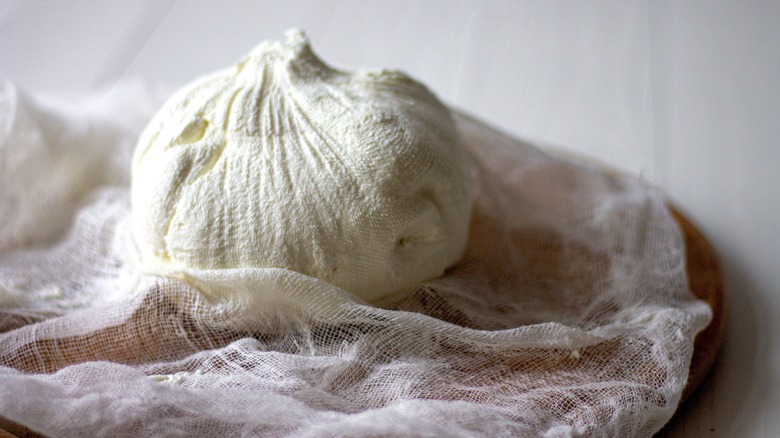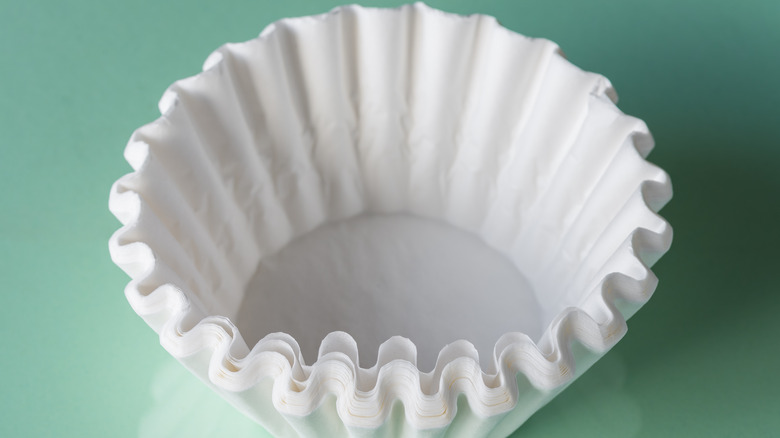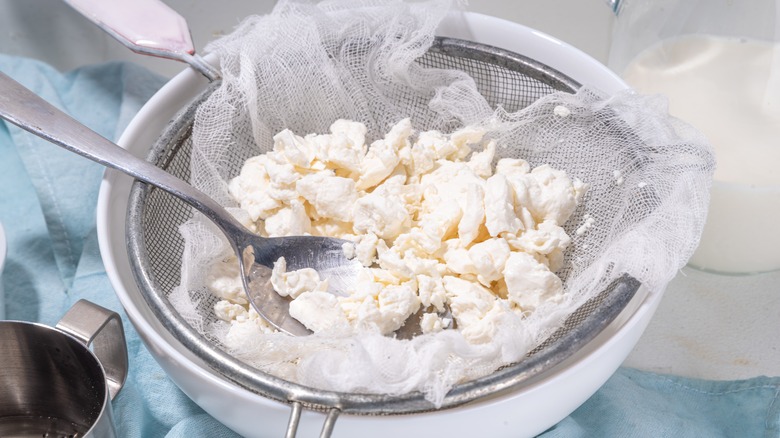No Cheesecloth, No Problem. Here's What To Use Instead
Cheesecloth may seem like a niche kitchen item that serves a single purpose, but in reality it has many functions and is great to have on hand. Of course, it isn't as common as other kitchen supplies, so what do you do if you need cheesecloth but don't have any? Rest assured, there are plenty of suitable substitutes — many of which you likely already own.
But first, what is cheesecloth exactly? Cheesecloth is a 100% cotton fabric woven into a gauze-like pattern; it's available in thread counts from 10 to 100. Originally designed to separate the whey from the dairy curds in cheesemaking, cheesecloth now is commonly used in the kitchen to strain, store, and sift. When you don't have cheesecloth on hand for straining liquids, there are several substitutes you likely already have in your home. Some of the best alternatives to use instead are scraps of thin fabric, pantyhose, coffee pot filters, and even clean socks. All of these options allow for liquid to strain and can be great to use in a pinch — as long as you know how to use them properly.
Best cheesecloth alternatives
Cheesecloths come in a variety of thread counts with looser weaving depending on the intended use. If your recipe calls for a specific thread count, you can look for alternatives that might be similar. The best substitutes should be a good match for the size of ingredients you are straining from the liquid. One of the best matches is a thin cloth, preferably made of muslin. The fabric will have a similar straining effect to cheesecloth when you wrap your mixture in the cloth and squeeze the liquid so it strains through. But, with things like soup stock, you'll need to lay your fabric over a sieve and heat-resistant bowl so the ingredients catch.
Another great cheesecloth substitute is coffee filters, which, as the name implies, are perfect for filtering. Coffee filters are made to retain solid coffee grounds while letting the drink seep through, so they will do the same to your ingredients. In fact, coffee filters are the secret to a simple stock-straining tip you need to know about. Note that to properly use a coffee filter as a replacement cheesecloth, you'll need to soak it first and then lay it in a mesh or wire strainer before using it. Wetting before use prevents it from soaking up additional liquid, and placing it in a strainer gives it a more solid base. This method is great for smaller quantities since single-use coffee filters only hold a few cups of liquid.
More cheesecloth possibilities
It's good to have multiple backups just in case other cheesecloth substitutions don't work or don't suit your specific recipe. One final place to look is your clothes dresser. Another surprisingly effective cheesecloth substitute is a pair of clean — emphasis on clean – socks. They are made with a porous fabric and naturally form a pouch for your ingredients — not to mention they come in multiple sizes, so you can select a pair depending on your recipe. Unworn socks are the best option, but any clean pair will do as you compress the air from the hole at the top and watch the liquid drip from the toes. Since socks are thicker, they're great for making things like state fair crescent cheese curds.
Another unorthodox, foot-related alternative is a set of pantyhose. Pantyhose are designed to be very thin, so you may want to layer a few together, but it will have the same outcome as cheesecloth. Note that pantyhose are more easily disposable, but if you're trying to be waste-conscious, then socks may be the better alternative since they are washable by hand, just like cheesecloths. Remember to check the desired thread count that your recipe calls for, however, because a thinner option like pantyhose may be better depending on what you're making. For example, you can infuse herbs into your soup by using a cheesecloth sachet, and since pantyhose are so light, they're a great substitute for a sachet.


